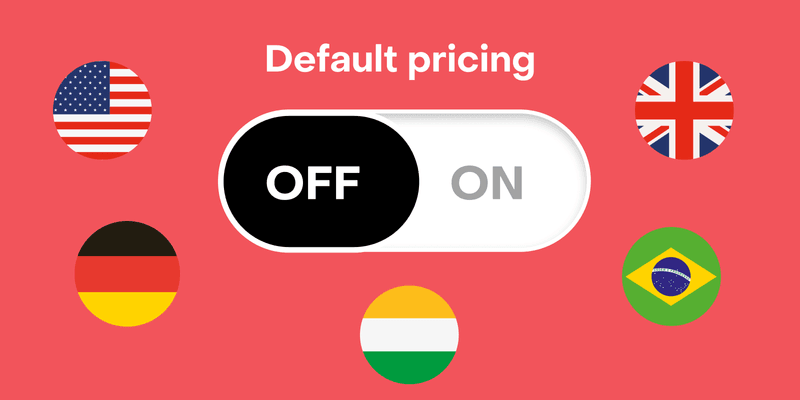Let me be blunt: if your entire monetization strategy boils down to “build new features” or “buy more traffic,” you’re playing on hard mode. I’ve been there. I’ve spent thousands on paid installs. I’ve obsessively A/B tested onboarding screens. But the biggest revenue unlock we ever hit in one of our apps didn’t come from any of that.
It came from changing the price. Not the product. Not the brand. Just the price — specifically, making it fair for users around the world.
And that’s the part most devs overlook.
Why global pricing is broken by default
Let’s say you charge $49.99/year. In the U.S., that’s a no-brainer for a useful tool — less than a cup of coffee a month. But in India or Brazil, it’s a much bigger ask. I once had a user DM me saying: “This costs more than my Netflix and Spotify combined. I love your app, but I just can’t.”
That’s when it hit me: value isn’t universal — it’s relative.
You’re not just competing with other apps, you’re competing with the local economy.
So what works instead?
Purchasing Power Parity (PPP) is your friend here. Think of it as adjusting your price so that $1 feels like $1, no matter the country. And it works.
When we started testing regional pricing with early Mirava users, here’s what we saw:
- A meditation app doubled subscriptions in Latin America in 14 days
- A wellness tracker got a 38% lift in conversions in Southeast Asia
- One app cut prices by 60% and got 3x more paying users in return
Let that sink in: you halve the price and triple the conversions.
It’s not about discounting — it’s about fair pricing.
5 quick fixes to unlock more revenue through regional pricing
1. Cut prices where it hurts most
Look at Southeast Asia, Latin America, parts of Eastern Europe. These are markets with high mobile penetration, but low average income. In these markets, a 60–80% price drop is what makes access possible.
Tip: I’ve personally used a 70% cut in India and 60% in the Philippines with great results.
2. Use local price psychology
Nobody wants to pay ₱202.33 or ₹376.19. It looks lazy. Round to prices that feel local: ₱199, ₹349, R$49.
Your app should feel made for them, not exported to them.
3. Map to native price tiers
Apple and Google both have native price tier suggestions. Use them as starting points. Their tiers are optimized for each region’s psychology and economy.
Tip: Don’t use the same tier on both platforms — Google’s and Apple’s markets behave differently.
4. Watch competitors in local stores
Your U.S. price might look premium… but in Brazil, you might be charging 5x more than your competitor. Look up the top 5 apps in your niche in local app stores. What do they charge?
We found a 2x price mismatch in LATAM vs. local competitors for one app, which explained months of churn.
5. Automate or you’ll never do it
I get it. Managing 175+ prices across three platforms is a nightmare. I tried the spreadsheets, I built a Zapier pipeline… It broke constantly.
That’s why we built Mirava, because nobody should be doing this by hand in 2025.
Why teams procrastinate and why you can’t afford to
Most teams ignore pricing updates because:
- Apple, Google, and Stripe all do it differently
- You have to update for each platform separately
- You might break something
- It’s not sexy, like a redesign or new feature
But you need to remember that you’re losing money every single day you delay.
You don’t need to boil the ocean: start with your top three regions outside your home market. Just doing that can boost revenue by double digits.
TL;DR — make pricing your growth lever, not an afterthought
In 2025, most apps are fighting churn, burning ad budgets, and hoping their next feature moves the needle. But the smartest teams I know are optimizing their pricing.
And regional pricing is one of the fastest, highest-ROI growth moves available today. You don’t need a new feature — you need better economics.
Want help without spreadsheets?
Mirava automates regional pricing for mobile apps. Cross-platform. PPP-based. Built by people who’ve felt this pain (and fixed it). Now in public beta.

